When it comes to professional baseball in Japan most people know one team: the Yomiuri (Tokyo) Giants. In Japan the saying goes that there are two types of baseball fans; those who root for the Giants and those who root against them. So when I recently got to attend a Yomiuri Giants game at the Tokyo Dome I was excited to see the country’s most famous and most vilified team play.
Arriving at the ballpark
The majority of fans arrive at Tokyo Dome via local trains or subways at Suidōbashi Station, which is a five-minute walk to the stadium. The Tokyo Dome is part of a much larger entertainment complex in Bunkyō known at Tokyo Dome City. The complex includes an amusement park, the LaQua spa resort, a 43-story hotel, and the domed stadium itself.

Several buildings around the stadium have restaurants, so fans can dine before attending a game. A large plaza in front of the stadium has a variety of souvenir stands and interactive games.
Entering the ballpark
 Main gate.
Main gate.
Tickets for Yomiuri Giants games dictate what gates fans should use to enter the stadium. People with tickets for field level typically enter through Gate 22, which is the main gate by the front of the plaza. A beautiful tile mosaic in front of the gate features the stadium’s name and nickname, “The Big Egg.” Despite the domed-nature of the stadium, the nickname does not come from a description of the venue, but instead a saying that it is home to “big entertainment and golden games.”
Fans with tickets to seats in upper levels use either the Nagashima (to the left of Gate 22) or Oh (to the right of Gate 22) gates to enter at their assigned gates.
The entrances to the upper bowl are named after two legendary Yomiuri Giants players: Shigeo Nagashima and Sadaharu Oh. Nagashima played third base for the Giants from 1958 to 1974, helped the team win 11 Japan Series titles, and was named Japan Series MVP four times. He managed the Giants from 1975 to 1980 and from 1993 to 2001, and led the club to three Japan Series titles during his second tenure with the team. Oh played first base for the Giants from 1959 to 1980, won 11 Japan Series crowns, and was named Central League MVP nine times. He managed the Giants from 1984 to 1988, and later won two Japan Series titles while managing the Fukuoka Daiei Hawks. The duo had their respective jersey numbers retired, and are members of the Japanese Baseball Hall of Fame.
Pregame festivities
Pregame activities during a Yomiuri Giants game are only slightly different from other professional baseball games. There were the usual ceremonial first pitches thrown by a cavalcade of fans. Each toss was rated as bronze, silver, or gold on the videoboard after the fact. The team’s cheerleaders and mascots also appeared on the field before the start of the game.

The cheerleaders lined up down the first and third base lines in addition to standing behind the pitcher’s mound. The squad did not lead cheers, but danced to synchronized music while joined by the team’s six Giabbit mascots. The Giabbits are a group of orange rabbits that cheer for the Giants. The newest member of the group is Grandpa Giabbit, who made his debut in 2014. The Giants’ original mascot is Mr. Giabbit, who wears a hat and sports number “555” on the back of his jersey.

A unique aspect of attending a game at a Central League team, such as the Yomiuri Giants, is that teams do not play the Japanese national anthem prior to the game. So once the cheerleaders and mascots left the field, the players took center stage, warmed up, and the game began rather unceremoniously.
Eating at the ballpark
There are so many different dining options at a Yomiuri Giants game that the Tokyo Dome produces a pamphlet that fans can use to locate their favorite foods. In addition to the pamphlet, are two displays that allow fans to find food associated with their favorite players. There is a large board featuring 14 players next to individually-branded items.

Additionally, fans can find bento boxes branded to individual players.

There are a variety of food options from traditional American baseball fare like hot dogs and hamburgers to Japanese staples like beef curry and ramen bowls. Global brands like Baskin Robbins and Taco Bell are also available. The Baskin Robbins stand has typical flavors like vanilla, cookies ‘n’ cream, and rocky road, but also flavors designed to suit Japanese tastes. The stand also serves matcha (green tea), musk melon, and dainagon azuki (red bean) flavors.
For my first time at a Yomiuri Giants baseball game, I opted for the Hayato Sakamoto-branded beef curry bowl.
The packaging was not especially unique besides a sticker with a label featuring Sakamoto batting. The most unique part of the item was the potato croquette that was stamped with the player’s last name and jersey number. The curry itself was tasty, but not particularly noteworthy unless you have never eaten Japanese curry.
Drinking at the ballpark
Several U.S.-based media outlets have written about the young women who carry small kegs on their backs and serve fans at Japanese baseball games. These woman are called “bīru no uriko,“ which translates to “beer girl.” They serve just one beer, so fans have limited options as the “big four” (Asahi, Kirin, Sapporo, and Suntory) breweries dominate the market.
In addition to the typical beer girls, there were vendors serving lemonade and whisky highballs to fans during the game.
Fans looking for craft beer choices must seek out a concession stand. On the Upper Level, I found a unique concession stand that served beer and sold merchandise with a children’s play area attached to the merchandise section.
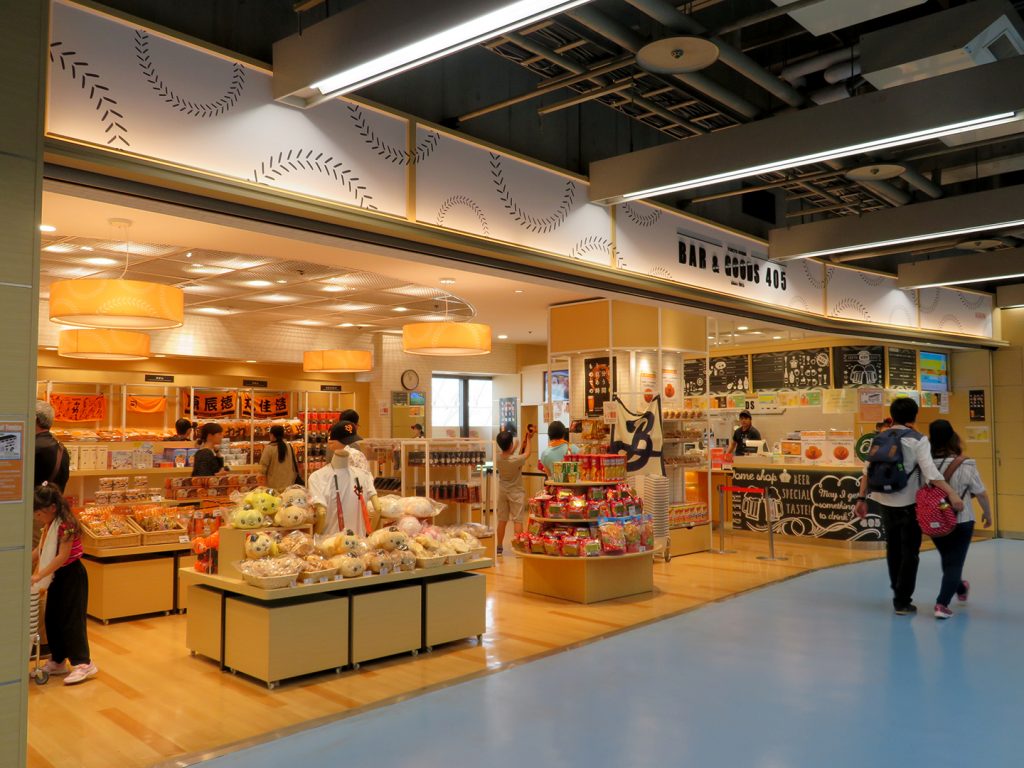
Among the craft beers available were Brooklyn Lager, Spring Valley Brewery 496 (an India pale lager), and Hitachino Nest White Ale (a Belgian witbier). The stand also served Kirin Ichiban Shibori.
Watching the ballgame
Japanese baseball stadiums tend to be symmetrical, so virtually every seat at the Tokyo Dome has a great view. For purists, the best view is behind home plate with an overview of the field, outfield, and videoboard.

The Saturday afternoon game was full with fans from the visiting Carp and host Giants. However, the red-clad Hiroshima fans stood out in contrast to the Yomiuri supports wearing orange.
In addition to capturing a view of the Giants cheering section in right field I captured several shots of the game. The Hiroshima Toyo Carp feature two popular foreign players in left-handed pitcher Kris Johnson and first baseman Xavier Batista. I even saw a Carp fan in the stands wearing a red baseball cap with dreadlocks attached to mimic the Dominican-born slugger.
The Giants sent left-handed pitcher C.C. Mercedes to the mound to face the Carp. I also captured Giants shortstop Hayato Sakamoto belting a late-game homer.
I took some other photos of the game including the Carp pitching change in the eighth inning, which included an interpreter accompanying Hiroshima manager Koichi Ogata to the mound. The interpreter walked into the dugout with Johnson, but immediately returned to the mound when left-handed reliever Kyle Regnault entered the game.
Recapping the fan experience
Attending a Yomiuri Giants baseball game is a lifelong dream for some baseball fans, and from beginning to end it is a great experience. The Tokyo Dome is easily accessible from anywhere in Tokyo. There are several options outside the ballpark to keep fans entertained. Whether people want to explore an amusement park or get something to eat before the game the options are boundless. Once fans enter the air-supported dome they are inundated with choices whether it is food, drinks, or merchandise. The food options are spectacular. Fans can choose from typical American ballpark fare like hot dogs to local cuisine like sushi in a bento box.
The action is frenzied, whether the home team is winning or losing, as fans chant from the start to the end of the game. A first-time visitor will not understand the chants or songs sung by the fans, but it is an experience for the senses. There is a lot to see, hear, and taste at a Yomiuri Giants game.
Final: Hiroshima Toyo Carp 7, Yomiuri Giants 5
Box Score







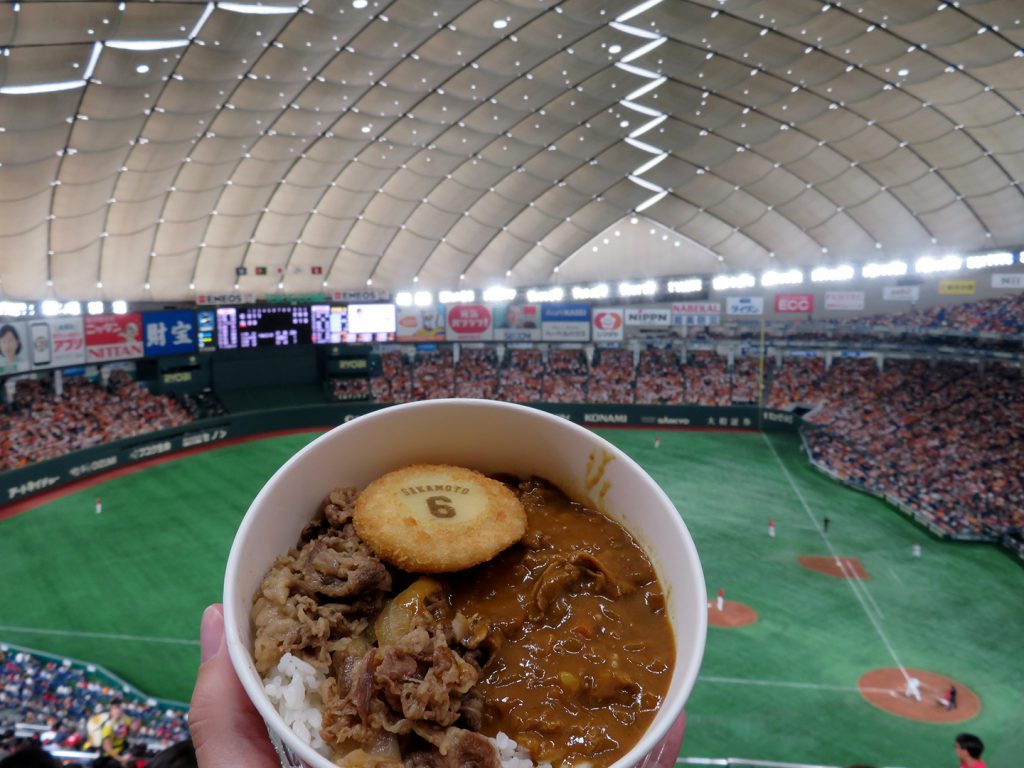


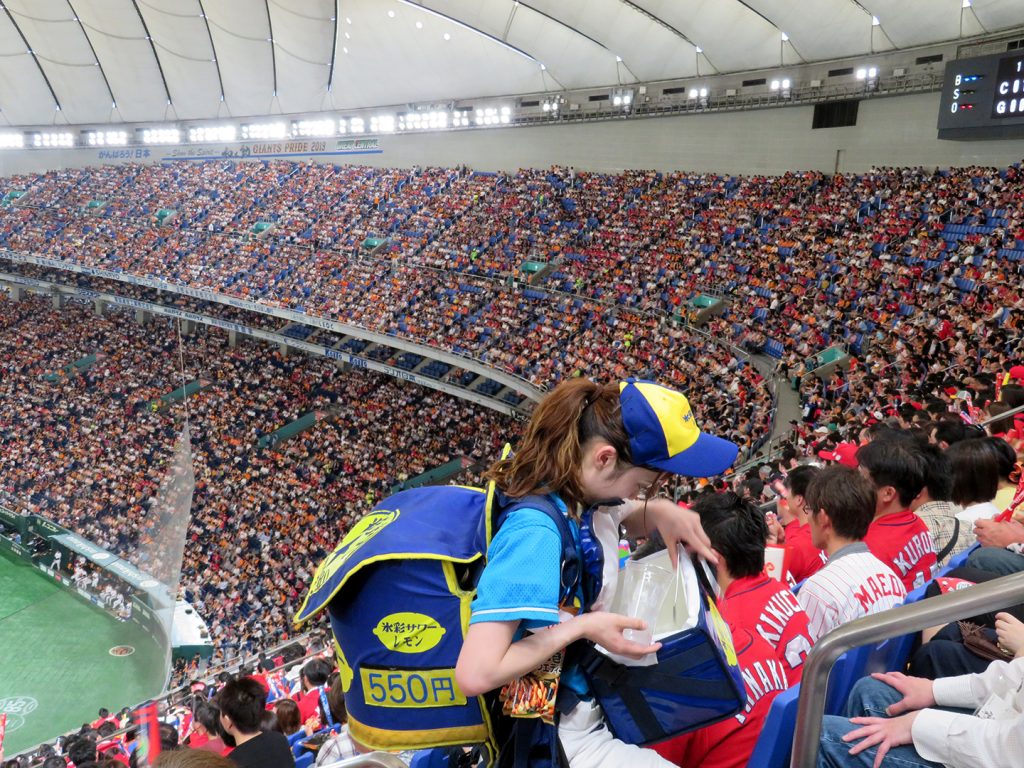
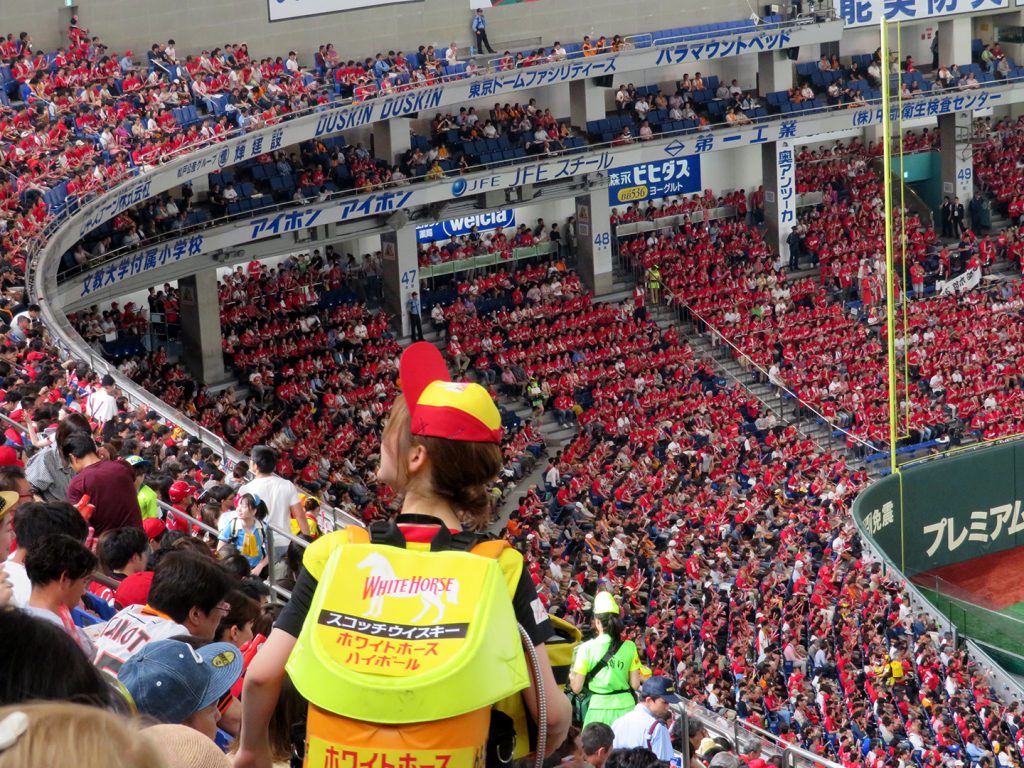



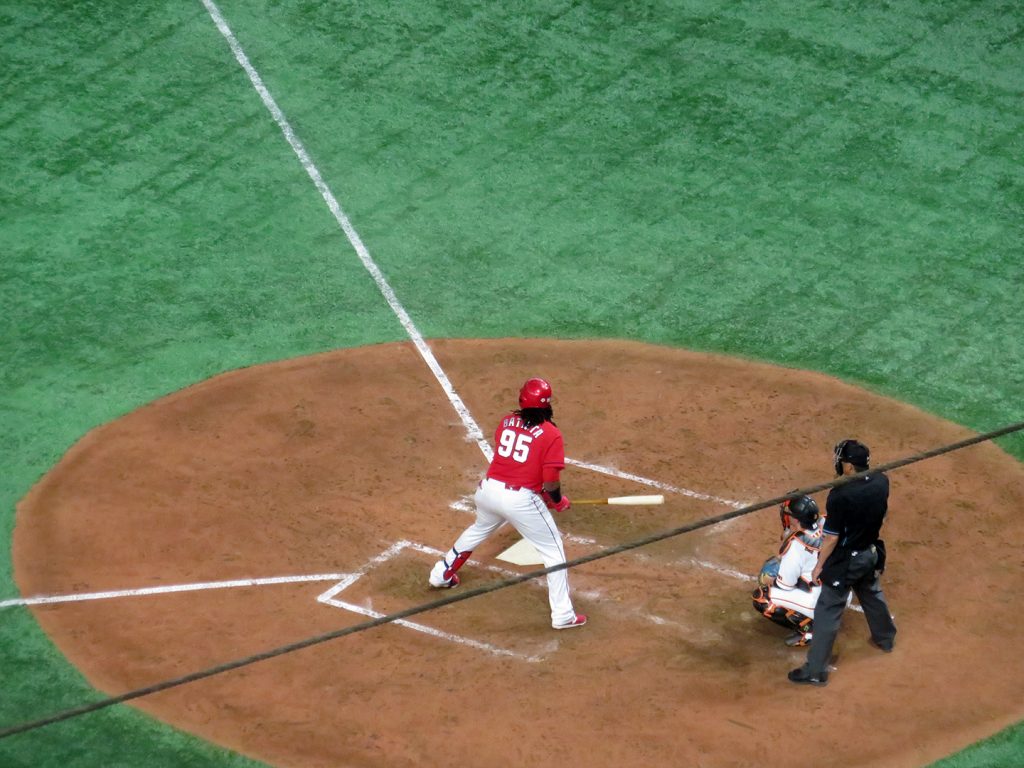







8 Comments
Charles McCool
Wow, this looks so much fun. For so long, I have wondered what the food would be like at a Japanese baseball game.
Steven On The Move
Food at Japanese baseball games are quite interesting because it’s a blend of familiar American food, but also distinctly Japanese cuisine. So far I have not been disappointed by any of the foods I’ve eaten at a NPB game.
Pola
Oh, man… Baseball in Japan is so on my list!!! Right now I’m just happy to get back to Chicago and see my Sox play. When I go to Japan, I’ll be sure to talk to you! ⚾️??
Steven On The Move
Baseball in Japan compared to the U.S. is interesting because it is a bit of a blend of what American fans know, but there are enough differences that it’s a unique experience. I am still learning my way around baseball in Japan, but I have enjoyed every bit of it.
Pingback:
Shane Barclay
Next time, you’ll have to pay a visit to the Japanese Baseball Hall of Fame, which is attached to the Dome but accessible from outside, in the Tokyo Dome City common area.
Steven On The Move
The Hall of Fame is on my list to places to visit in the near future once travel restrictions are lifted. So is the Sumo Hall of Fame, but sadly I’m not sure when I’ll get to visit either of them.
Pingback: